Joe Walsh Double Classic Pedal:
• Joe Walsh signature compression/drive pedal
• Compression circuit modeled after hi-fi studio designs
• Classic Amp circuit delivers the sound of various vintage tube amps
• Each effect is independently switchable
• Pre-Post switch places the compressor before or after the amp circuit
• First signature compressor pedal ever for Joe Walsh
• 100% analog signal path
Great vintage amp sound.
The Classic Amp circuit emulates many of the tube amp tones Joe Walsh is known for. The Compressor delivers a detailed, studio-style compression inspired by rackmounted designs. And the Pre/Post switch allows you to place the compression before, or after, the amplifier circuit. Further tailoring your sound. Whether you’re looking for Joe’s signature tone, or just a great vintage amp sound, the Joe Walsh Double Classic is for you.
Compressor circuit.
The compression circuit in Joe Walsh’s signature pedal delivers a pristine, produced quality that shares much more in common with rackmount studio compressors than many of today’s compression guitar pedals. Whether you want a straight tone or a tone with some amplifier color, the compression circuit is completely independent of the Classic Amp section of the pedal. This gives you full access to the compressed sounds. Inspired by the hardware used at Cloud 9 Recording Studio, the JWDC allows Joe to access his studio tones wherever he is performing.
Classic Amp circuit.
The 4-control layout on the Classic Amp section makes putting together great guitar tones simple. You get just the essentials of bass, treble, gain and output – but you can easily access all sorts of different tube amp sounds. From clean and sparkling to fat and driven, a twist of the Gain knob gets you there instantly. And discerning guitarists love how the 100% analog signal path of the Joe Walsh Double Classic pedal ensures your guitar tone shines through. The Classic Amp was designed to simulate the classic tube amps that Joe has used over the years. The controls on a classic tube amp were designed to be simple and straight-forward and the same is true for the Classic Amp.
Pre/Post switch.
The onboard Pre/Post switch acts as a virtual patchbay for your compression and amp tones. With a flip of the switch, you can place the compression circuit before, or after, the Classic Amp section. Joe Walsh uses this extensively – dialing in the amp side to shape and push the compression circuit into a smoother more natural drive of its own. Either way you run it, at your disposal, you’ll have premium tones inspired by Joe Walsh.
How to use the Joe Walsh Double Classic pedal:
Sensitivity – by adjusting the sensitivity properly, the output level of your instrument can be controlled (so as not to distort the input of the compressor). The opposite is true if the bass or guitar has passive or low output pickups. Raising the Sensitivity control increases the input level, providing a stronger input signal, which the compressor needs to work properly.
Ratio – the range is adjustable from 2:1 to 10:1. The more you turn this knob up (clockwise), the higher the compression ratio. There is also a soft-knee feature built into the circuit. This means that the ratio will start low, and then increase [in direct proportion] to the amount that the signal exceeds the threshold. Everything from mild to fairly heavy compression settings are possible. The compressor is a very flexible circuit that has both smooth and natural sounds. You will be able to control the dynamic range of your instrument, while simultaneously preserving its tonal character.
Bass – this knob allows you to cut or boost the low frequencies of your guitar/bass. The EQ curve is very smooth and versatile. You will be able to dial-in the right amount of low end to give your guitar punch and power, while still retaining low end clarity.
Treble – the Treble knob allows you to adjust the mid and high range frequency spectrum of the guitar. You can dial in the right amount of mids and highs, without making your guitar or bass sound too brittle or harsh.
Gain – the Gain knob is very versatile. At lower settings (counter-clockwise) there is very little, or no gain at all. At this setting, your bass will sound warm and full – with no distortion. Keeping the Gain control in this position will really allow you to experiment with the EQ settings. You can make some fine adjustments to your sound by simply experimenting with the Bass and Treble controls. Turning the Gain control up (clockwise) introduces distortion. The distortion that the Classic Amp produces is not over-the-top – like that of a fuzz box. The sound breaks up, naturally, while at the same time, retaining much of its clarity. Turning the Gain up (clockwise) will also give your bass more drive and attitude. Experimentation is the key to unlocking the potential of the Classic Amp and the JWDC.
Output – this knob controls the level of the output signal from the Classic Amp to the next effect in your signal chain.
Pre/Post Switch – with the switch in the “Pre” position (down), the compressor is placed before the Classic Amp. With the switch in the “Post” (up) position, the compressor is placed after the Classic Amp [in the signal chain]. For a more traditional, drive-into-compression format – just hit the switch.
Joe Walsh Double Classic Videos:

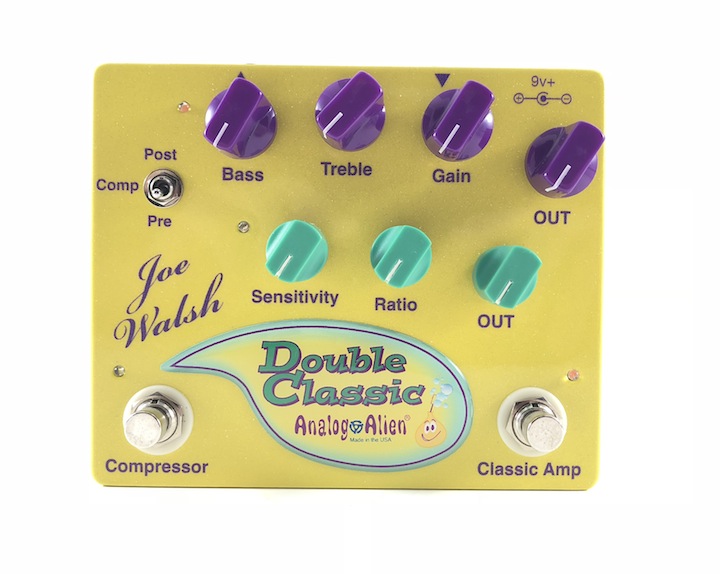
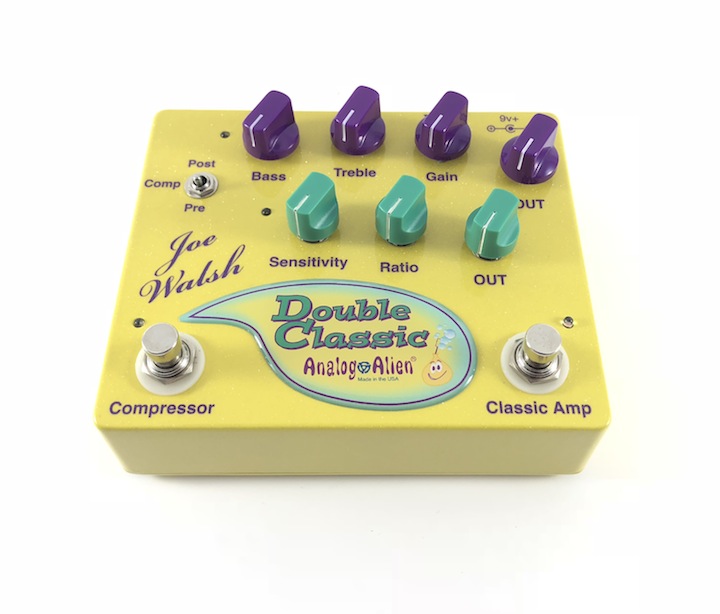
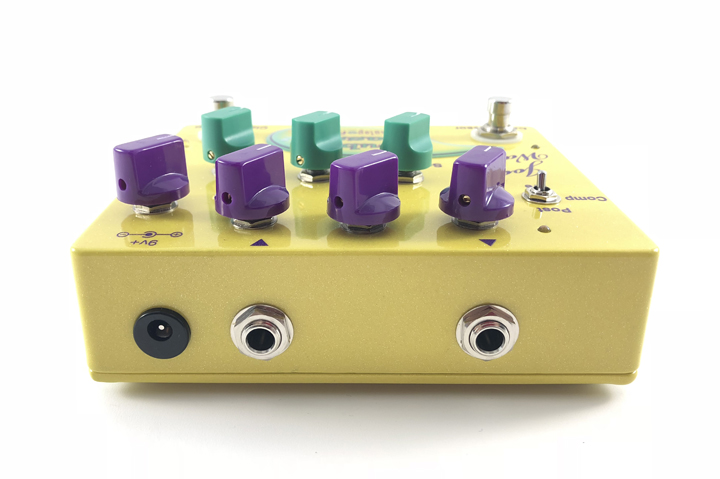
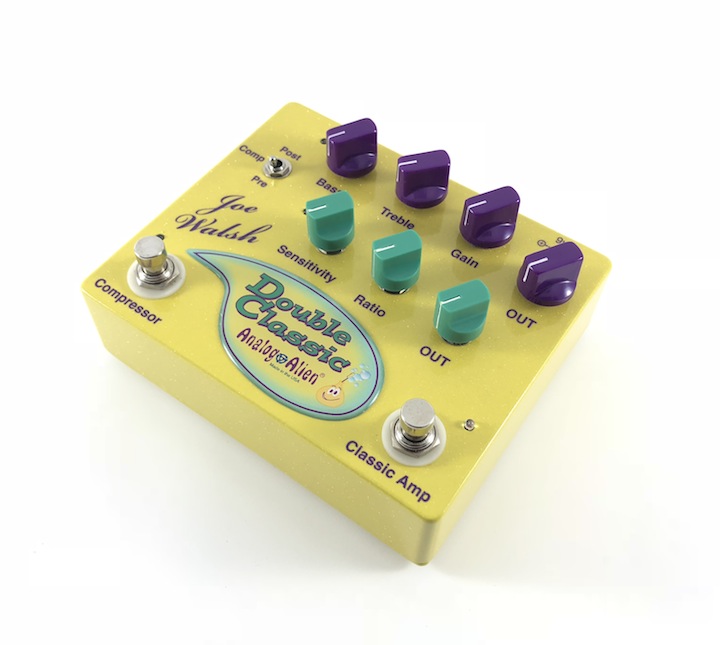
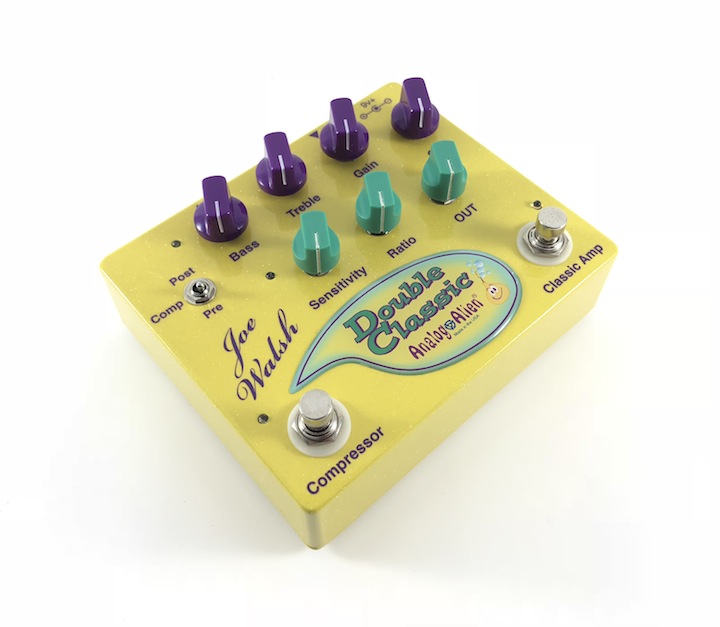
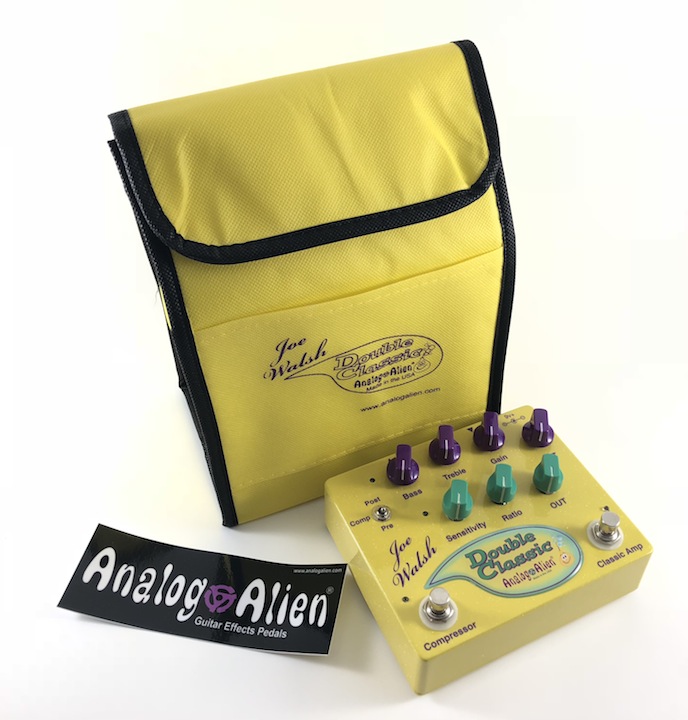
Mark Phillips –
Vintage Amp Fans – Check this Out!
I own (and have owned) an extensive array of vintage amps (’55 Deluxe,’62 Princeton, ’62 Super, ’69 Marshall 20w, Reverberocket, ’64 Vox AC4, to cite a few). The exquisite tone of those amps has been always hard to match in a roadworthy, volume-competitive and portable amp. I have a couple of Fender Pro Juniors that come close.
The JWDC has changed all of that.
The JWDC an extremely “musical” device. That is is to say, when you adjust the knobs you always maintain useable tone (like the aforementioned amps). So many amps and effects nowadays have knobs whose range take you into a predominantly sonic wasteland.
What I particularly like is when you back the volume off on your guitar, you maintain quality (i.e., clarity with less breakup) sound. The JWDC provides a breadth of tone and (most importantly) maintains the character of the instrument that makes it joy to use.
I’m running it through a Mesa 20/20 power amp (no preamp), into a mid-sixties Vox Berkeley cabinet wired in stereo. With all the amps/systems I have – this is now clearly my favorite.
Let me also note, that I have run this through a cheesy Fender Frontman 15 (I know… this anomaly in my stable was a gift) with equally splendid results.
I can’t recommend this enough!
Don Lunceford –
This is an incredible sounding pedal. I think most people really like the amp side which is really great but I am really impressed with the compressor. Look up some YouTube videos and listen with headphones – It will sell itself. I highly recommend it, but don’t listen to me, listen to Joe Walsh who has forgotten more about guitar tone than I will ever know. This pedal is well made and the two brothers who designed and built it stand behind their product.
Marty Fields –
I’ve had the JWDC for several years now. There’s just something about this pedal! I have it in front of my tube amps and both the compressor and OD round out amazing sustain and tone. There isn’t an amp it doesn’t make sound richer and warmer. I also use it straight into my DAW (Logic X) via the Effects Pedal Interface (EPi) and get monster tones in the selection of amps. This pedal never leaves my board and is present on every recording I make.